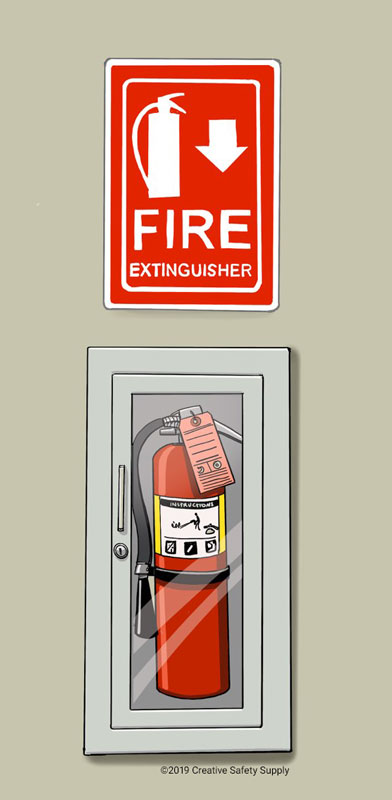
 Fires can be extremely unpredictable and cause severe damage to property and result in serious injury to workers, or even death. OSHA requires employers to create a written fire prevention plan that includes the identification of fire hazards, train employees on fire safety, and have a proper fire suppression strategy. Fire safety signs are important in keeping workers informed on where necessary equipment is kept and knowledgeable of fire safety practices.
Fires can be extremely unpredictable and cause severe damage to property and result in serious injury to workers, or even death. OSHA requires employers to create a written fire prevention plan that includes the identification of fire hazards, train employees on fire safety, and have a proper fire suppression strategy. Fire safety signs are important in keeping workers informed on where necessary equipment is kept and knowledgeable of fire safety practices.
Fire safety signs are also used to communicate with emergency personnel. First responders will be able to quickly locate fire extinguishers, fire hoses, and FDC ports when they are clearly marked with a safety sign. Bold, easy-to-read safety signs are also critical in ensuring the safety of visitors or individuals who may be unfamiliar with your facility. In the case of a fire-related emergency, anyone should be able to find a fire extinguisher and an emergency exit.
Other items and areas in a facility that should be marked with safety signs and labels include the location of all important fire equipment, like alarm pull stations, the fire sprinkler system, etc. Additionally, signs should be posted in areas with fire hazards like flammable liquids and gasses or areas where if someone lights a cigarette, the risk of fire is severe. One crucial part of fire safety signs is to ensure workers are following proper safety practices and blocking items that is needed in fire emergencies or blocking the routes to safety.
Floor Signs for Fire Safety

Clearly mark fire extinguishers and their location, ensuring the extinguisher will not be blocked and can be easily located in the case of an emergency. The same concept should be applied for fire hose connections so emergency responders can easily and quickly find the connection. The signs can be placed on the wall under the extinguisher or on the floor to keep workers from placing equipment on the floor in front of the extinguisher or fire hose connectors.

In cases of fire-related emergency, people need to be able to quickly find the nearest and safest route out of the building. All fire exits and emergency evacuation areas should be marked with both wall signs and floor signs. In cases of low-lit areas, reflective signs can be used along with photoluminescent tape to clearly mark evacuation paths. This sign for example comes in a variety of sizes, different adhesives, and levels of durability.
Similar Questions
- What can I use floor signs for?
- How high does a fire extinguisher sign need to be?
- What are the Safety Signs that Every Workplace Should Display?
- What are other forms of visual communication to use alongside safety signs?
- What are different road or traffic control safety signs?
- Are safety signs just for the wall?
- Why are safety signs important?
- Where are safety signs needed?
- What do different colors of safety signs mean?


